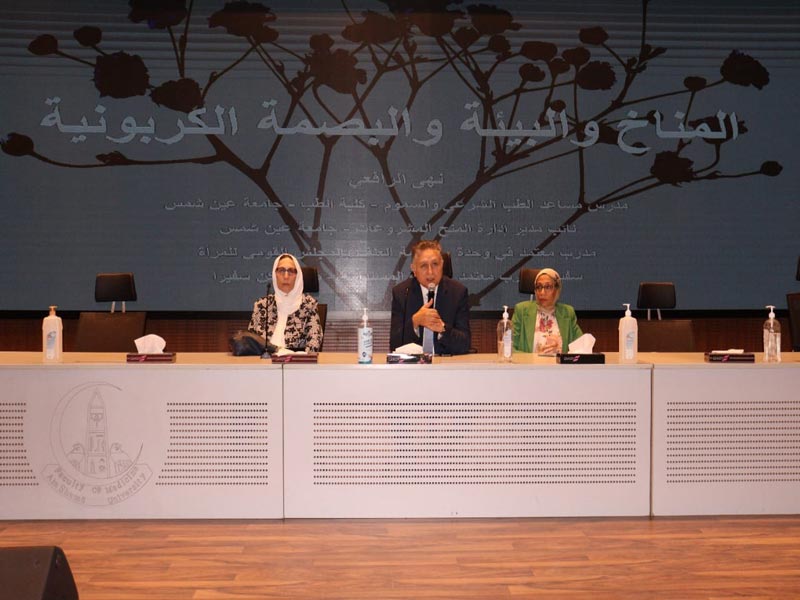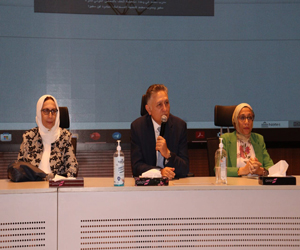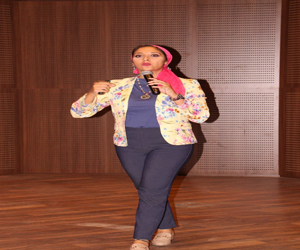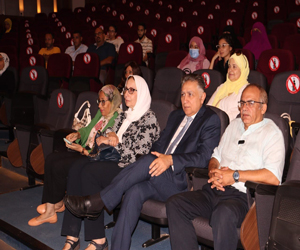
Ain Shams University's efforts towards transforming into a green university in light of climate changes and carbon footprint… A lecture at the Faculty of Medicine
Under the patronage of Prof. Dr. Mahmoud El-Meteini, President of Ain Shams University, Prof. Dr. Osama Mansour, Acting Dean of the Faculty of Medicine and Prof. Dr. Heba Al-Saeed, Vice Dean for Graduate Studies and Research Affairs. Dr. Hala Suwaid, Vice Dean for Community Service and Environmental Development, organized a lecture entitled: “Climate Changes... Carbon Footprint... The University’s Efforts to Transform into a Green University,” in which Dr. Noha Al-Rafei, Deputy Director of the Grants and Projects Department at the university, lectured.
The lecture comes within the efforts of Ain Shams University, headed by Prof. Dr. Mahmoud El-Meteini for active participation in the National Initiative for Smart Green Projects within the framework of sustainable development and Egypt’s Vision 2030, and in conjunction with Egypt’s preparation to host the Global Summit on Climate Change “COP 27”, which is scheduled to be held from 6 to 18 November in Sharm El Sheikh, in cooperation with the Students’ Union And in the presence of the faculty staff, the teaching assistants, the staff and students of the faculty.
Where Dr. Noha Al-Rafei explained the principles and pillars of sustainable development, Egypt’s Vision 2030, social, environmental and economic dimensions, and why the world is now moving towards achieving the international goals. She touched on the most important applications in the field of medicine, as hospitals are the highest carbon footprint, then discussed the causes of climate changes and the emergence of carbon emissions. And the greenhouse gases that led to the formation of a layer of gases outside and inside the atmosphere and the increase in temperatures, and affected humans, animals and plants, and thus affected the environment and our social and economic life, melting ice and rising sea levels, in addition to the occurrence of climatic changes that are represented in Variation in temperature, more severe storms and an increase in the percentage of fresh water over salinity, which leads to physical changes in the percentage of salinity in the seas, which resulted in the extinction of some marine organisms that live at a certain salinity rate, as well as for animals that cannot live in high temperatures.
 |
 |
 |
||
She also reviewed the role of the university in facing climate changes and preserving the environment, including afforestation, the establishment of the Innovation and Entrepreneurship Center building that holds an international certificate as a smart green building that reduces the use of energy and water significantly, as well as the acoustics building at the College of Engineering, explaining that the university has begun to transform Through a large number of online training courses, student payments were transferred electronically, and university platforms were created and activated, which reduces the use of papers, and thus reduces the consumption of gasoline in transportation, which reduces the carbon footprint, as well as the establishment of the information network building and the establishment of the Center of Excellence for Sustainability, which works on three axes It is the establishment of partnerships between faculties and highlighting the role of the university in it to benefit from the integration of the research and interface form and giving training lectures to students in addition to holding applied companies with parties inside and outside the university, in addition to many changes in the university’s infrastructure and programs aimed at serving the goals of sustainable development and Egypt’s vision 2030.
The lecture concluded with the carbon footprint and how it is calculated and how all human activities affect it, and some important messages directed at reducing the carbon footprint such as reducing consumption, using environmentally friendly means of transportation, and some simple practices that have a significant impact on preserving the environment.
.svg)



